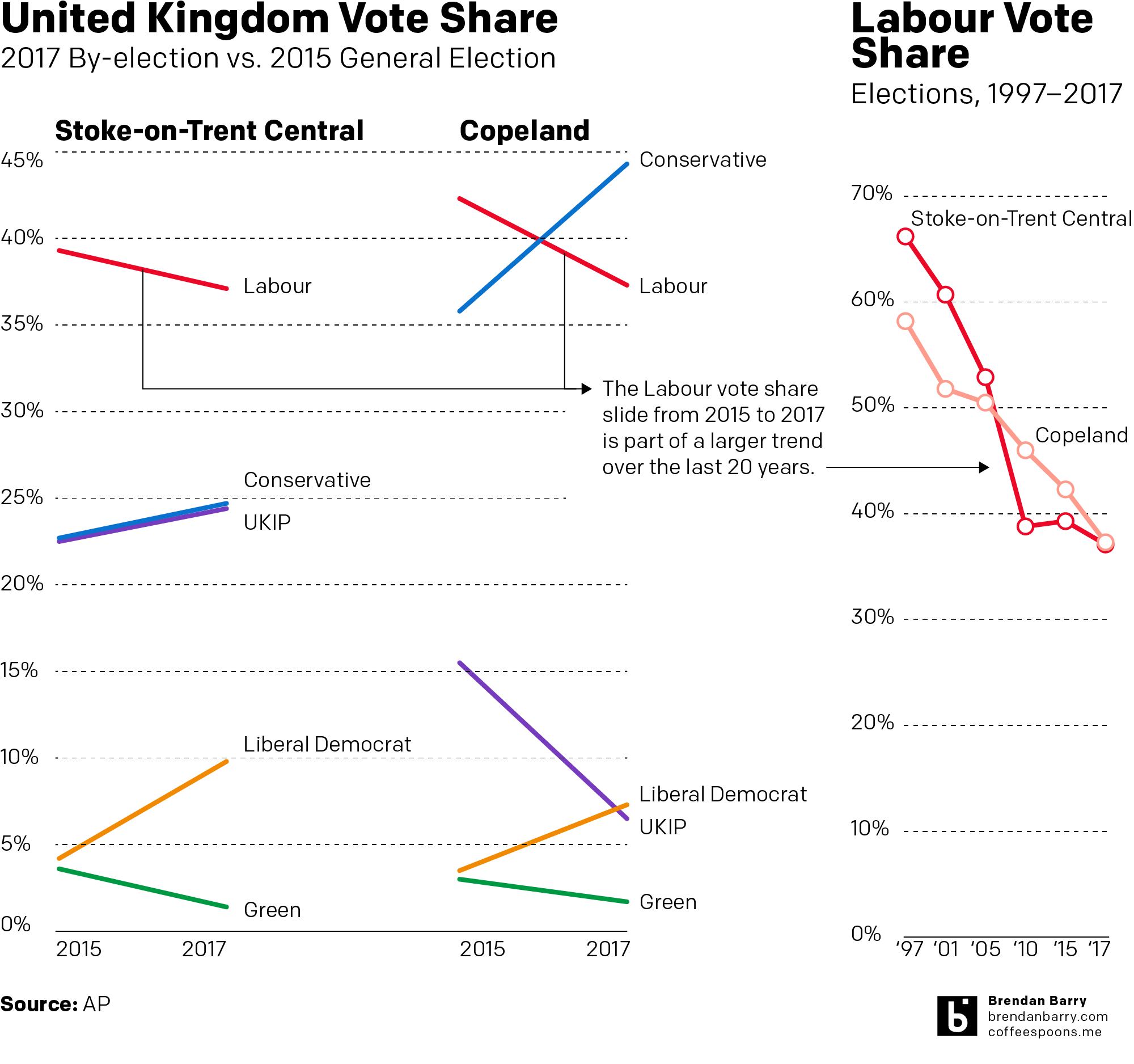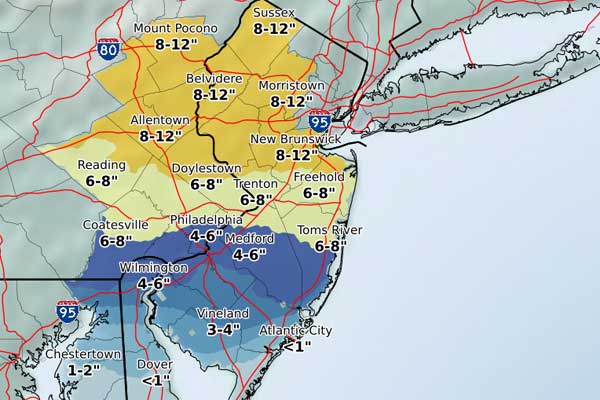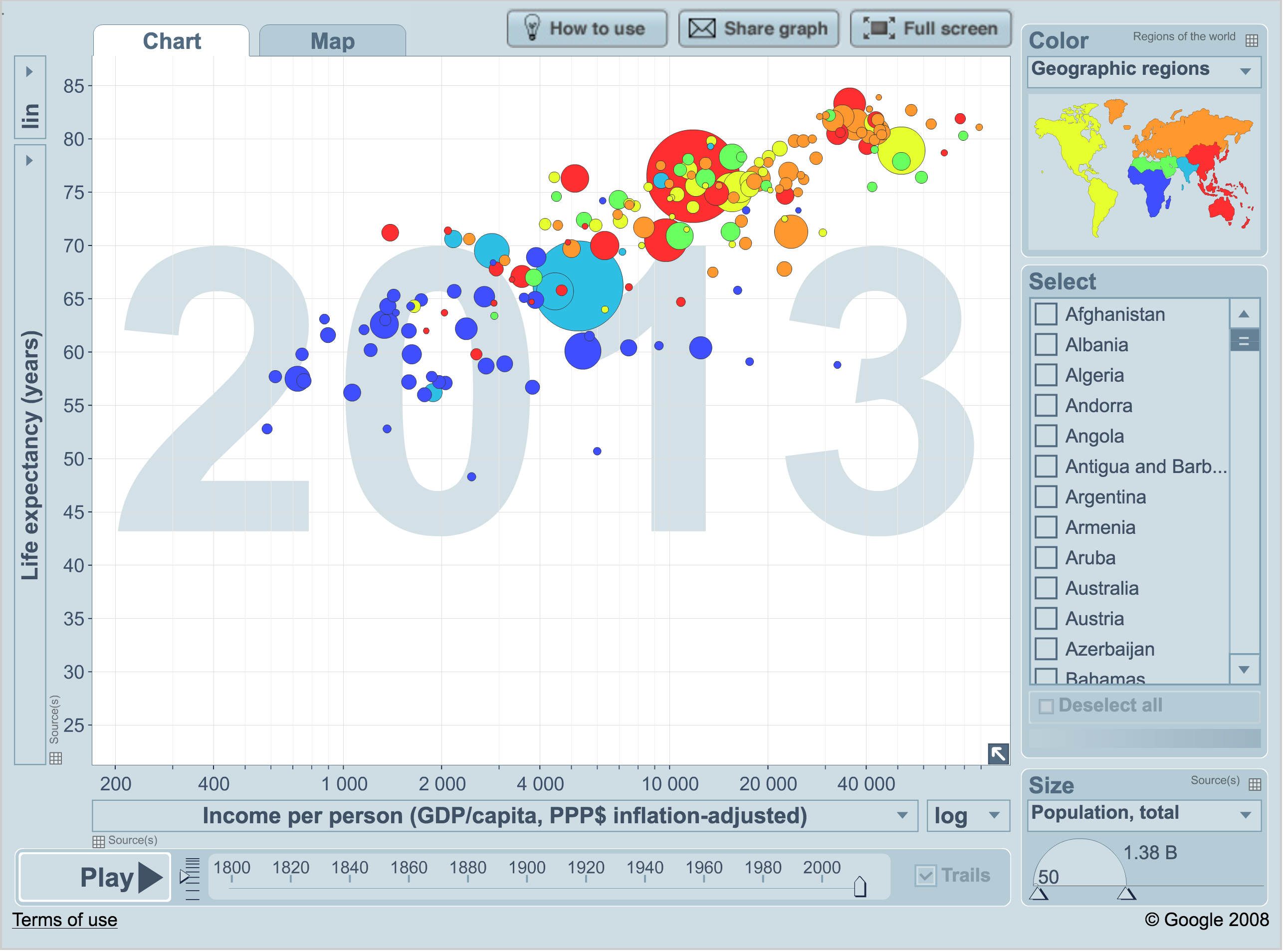Labour’s collapse in Copeland in particular is comically bad, but this Friday indulge me in a non-comedic post. Instead, Thursday night we had the results for the by-elections in Stoke and Copeland, two long-held Labour Party constituencies.
Generally speaking in a by-election, the government of the UK can expect to see its vote share decrease if not altogether lose seats. Consequently Labour, as the party of the opposition, should have been expected to hold its two seats and increase its vote share.
Well Labour did win in Stoke, but its majority shrank by half. That’s not so good. And then in Copeland, the bottom sort of fell out. The charts I put together using AP data show what in Copeland was an historic win for the Tories. I could get into the hows and the whys, but you’re best off to go read a British politics site for that. But…something something Corbyn.










